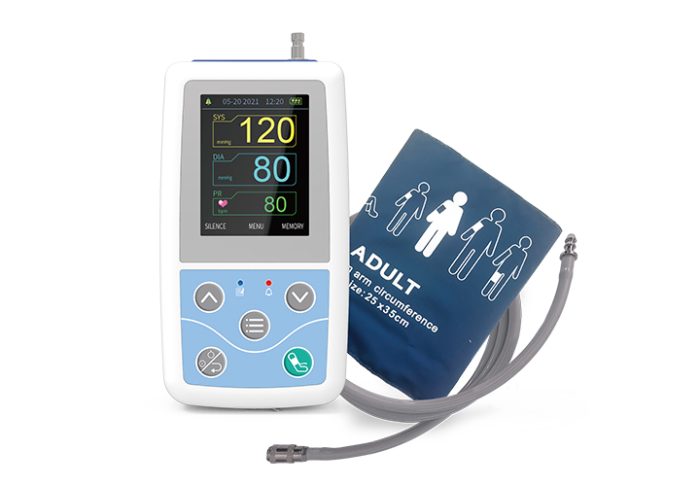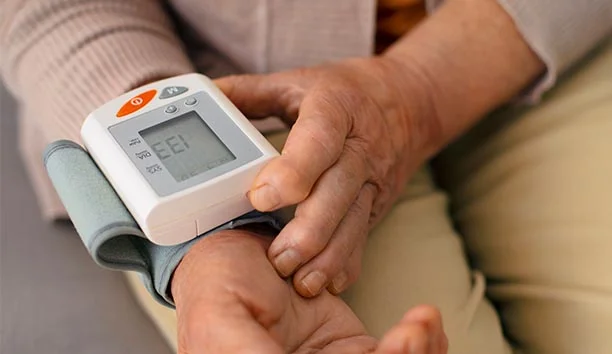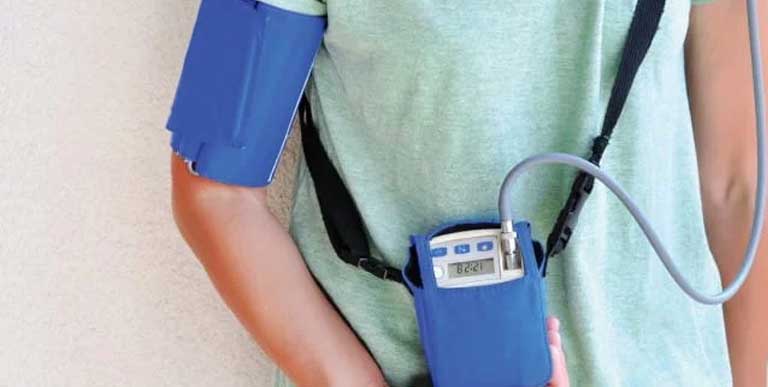Understanding the Relevance of the ABPM Test in Hypertension Monitoring
Ambulatory Blood Pressure Monitoring (ABPM) is an essential device in taking care of high blood pressure. By providing continual blood pressure readings over 24 hours, it offers insights that conventional measurements can not. This method can expose conditions such as white coat disorder and concealed high blood pressure. Comprehending these subtleties is essential for efficient client care. As medical care progresses, the effects of ABPM in shaping customized therapy strategies become increasingly considerable. What does this mean for the future of hypertension monitoring?
What Is Ambulatory Blood Pressure Monitoring (ABPM)?
Ambulatory Blood Pressure Monitoring (ABPM) is an approach that enables for the continual measurement of blood pressure over a 24-hour period while clients involve in their day-to-day activities. This cutting-edge method involves making use of a mobile device that instantly takes blood pressure readings at established intervals, usually every 15 to half an hour. ABPM gives a detailed account of blood pressure changes throughout the night and day, recording variations that might be missed out on during conventional office measurements.It is especially valuable for identifying conditions such as hypertension and white layer syndrome, where people display raised analyses only in scientific settings. By providing real-time data, ABPM boosts the precision of high blood pressure evaluations and aids in tailoring treatment strategies. The understandings obtained from this monitoring might lead to much better management of cardiovascular health and wellness, strengthening the importance of ABPM in modern-day medical technique.
How ABPM Differs From Conventional Blood Pressure Dimensions
While traditional blood pressure measurements usually depend on readings absorbed a clinical setup, ABPM uses a much more substantial approach by assessing blood pressure over a complete 24-hour duration. Traditional methods frequently generate a limited number of readings that might not catch changes in blood pressure throughout the day. On the other hand, ABPM enables for constant monitoring, providing insights right into variations during various activities, such as resting and exercising.Additionally, typical measurements might be influenced by the patient's stress and anxiety throughout a medical professional's check out, referred to as "white layer disorder," potentially resulting in erroneously high readings. ABPM minimizes this concern by gathering data in an acquainted atmosphere, yielding a much more exact depiction of a person's blood pressure. The gadget typically takes measurements at routine periods, making certain complete information collection. This basic difference highlights the relevance of ABPM in supplying a complete image of a client's blood pressure account.
Advantages of ABPM in Hypertension Monitoring
Using Ambulatory Blood Pressure Monitoring (ABPM) offers substantial advantages in managing hypertension. It provides precise and constant blood pressure analyses, aiding to identify conditions such as white coat syndrome. This precise data enables doctor to make even more personalized treatment adjustments tailored to individual person requirements.
Precise Blood Pressure Monitoring

Determining White Coat Disorder
Ambulatory Blood Pressure Monitoring (ABPM) plays a significant role in recognizing white layer disorder, a sensation where patients display raised blood pressure analyses in a medical setup however keep typical levels in their daily lives. This problem can result in misdiagnosis and unneeded therapy, complicating high blood pressure management. ABPM gives a thorough analysis of blood pressure over a 24-hour duration, catching variants that take place during daily tasks and sleep. By contrasting these analyses to facility measurements, health care companies can compare real hypertension and white coat syndrome. Eventually, identifying this disorder is important for tailoring suitable treatment approaches and preventing overtreatment, making certain that clients receive treatment that precisely mirrors their blood pressure condition outside the medical atmosphere.
Customized Therapy Adjustments
Enhancing hypertension management with customized treatment adjustments becomes possible with the understandings got from ABPM. This technique offers continual blood pressure monitoring, allowing doctor to recognize patterns and changes that might not be noticeable during typical office check outs. By understanding a patient's special blood pressure account, clinicians can customize treatment plans that think about factors such as medicine efficiency, way of living influences, and individual action to therapy. This individualized technique not just enhances person adherence however likewise boosts general outcomes by decreasing the danger of complications linked with unrestrained hypertension. Inevitably, the use of ABPM encourages medical professionals to make enlightened choices, leading to extra reliable administration methods that align with each person's certain needs.
Identifying White Coat High Blood Pressure and Masked Hypertension
White layer hypertension happens when clients show raised blood pressure analyses in a professional setting because of anxiety, while their measurements are typical in other environments. In contrast, concealed hypertension describes individuals whose blood pressure is normal during clinical visits however raised in life. Understanding these two phenomena is important for precise high blood pressure management and therapy choices.
Defining White Coat Hypertension
Hypertension management usually entails distinguishing in between numerous blood pressure conditions, specifically white coat high blood pressure and masked high blood pressure. White layer high blood pressure is characterized by elevated blood pressure readings in scientific setups, frequently as a result of anxiousness related to clinical settings. Patients with this problem commonly exhibit normal blood pressure levels outside of these setups. This sensation can lead to misdiagnosis and unnecessary treatment if not properly identified. It is essential for doctor to recognize this problem to stay clear of overtreatment and to assure precise high blood pressure monitoring. ABPM test in original site Bangalore. Using ambulatory blood pressure monitoring (ABPM) can assist distinguish white coat hypertension from continual high blood pressure, enabling more reliable and customized treatment techniques for individuals experiencing this unique blood pressure feedback
Understanding Masked High Blood Pressure
Masked high blood pressure postures a considerable challenge you can check here in hypertension administration, as it typically goes undetected in clinical settings. This condition occurs when an individual's blood pressure readings are normal throughout medical check outs but elevated in your home or throughout everyday tasks. Unlike white coat hypertension, where anxiousness in a medical setting causes short-term spikes in blood pressure, covered up high blood pressure can cause unrecognized cardio risks. People might believe they have regular blood pressure, overlooking required way of living changes or therapies. Identifying masked high blood pressure is necessary, as it can lead to significant health issues with time. Ambulatory Blood Pressure Monitoring (ABPM) is a reliable tool for finding this condition, making it possible for medical care professionals to offer timely intervention and enhance individual results.
The Duty of ABPM in Personalized Therapy Plans
As medical care carriers increasingly recognize the relevance of individualized treatment, the implementation of Ambulatory Blood Pressure Monitoring (ABPM) has ended up being vital in customizing treatment strategies for individuals with high blood pressure. ABPM permits constant blood pressure dimension over 24 hr, revealing patterns that may be missed throughout common workplace brows through. This extensive data provides insights into a patient's blood pressure irregularity and nighttime degrees, which are vital for recognizing general cardiovascular risk.
Analyzing ABPM Outcomes: Understanding Patterns and Fads
Analyzing the arise from Ambulatory Blood Pressure Monitoring (ABPM) requires an eager understanding of different patterns and patterns that emerge from the collected data. Clinicians evaluate the 24-hour blood pressure account, comparing daytime and nighttime analyses to determine potential white-coat high blood pressure or covered up high blood pressure. A consistent elevation in daytime readings might suggest poorly regulated high blood pressure, while nighttime dips can indicate effective blood pressure management or nighttime high blood pressure, which postures added cardio risks.Trends with time, such as continual increases or changes, are additionally important. Variability in analyses can recommend underlying issues, such as tension or medication non-adherence. Furthermore, the assessment of blood pressure patterns in find out connection with everyday activities can supply insights right into lifestyle elements impacting hypertension. By thoroughly analyzing these results, healthcare experts can customize treatment techniques to boost client end results in hypertension administration, eventually bring about far better cardio health.
The Future of Blood Pressure Monitoring and Hypertension Treatment
Arising technologies and advancements are positioned to transform blood pressure monitoring and high blood pressure care in the coming years. Wearable gadgets equipped with sophisticated sensing units are anticipated to offer continuous, real-time blood pressure readings, permitting more tailored treatment routines. These tools will not just enhance person involvement however additionally facilitate remote monitoring by health care companies, causing timely interventions.Artificial intelligence and artificial intelligence formulas will play a vital role in assessing patient information, recognizing trends, and anticipating hypertension-related issues. This predictive ability can result in more positive administration strategies. Furthermore, telehealth services will likely broaden, enabling people to talk to specialists and obtain tailored guidance without the need for in-person visits.Furthermore, improvements in mobile applications may empower clients to track their blood pressure individually, promoting a sense of ownership over their wellness. Overall, the future of blood pressure monitoring and high blood pressure treatment appears appealing, with modern technology at its center.
Often Asked Concerns

For how long Does an ABPM Test Typically Last?
The ABPM test typically lasts 1 day. During this period, a mobile tool measures blood pressure at routine periods, offering considerable information on a patient's blood pressure patterns throughout everyday tasks and rest.
Can ABPM Be Made Use Of for Youngsters and Teens?
ABPM can indeed be used for children and adolescents - ABPM test in Bangalore. It provides beneficial understandings into their blood pressure patterns, helping doctor precisely diagnose and manage high blood pressure in more youthful populaces, promoting better lasting health and wellness end results

What Should I Prevent Prior To Taking an ABPM Test?

Prior to taking an ABPM test, individuals need to avoid high levels of caffeine, nicotine, and exhausting exercise, as these can temporarily boost blood pressure analyses. Additionally, it's suggested to avoid wearing limited garments that may hinder dimension precision.
Exactly how Usually Should I Undergo ABPM Testing?
The frequency of ABPM testing differs based on specific health and wellness needs. Normally, it is suggested every six to twelve months, especially for those with unrestrained hypertension or significant changes in blood pressure medication. Normal monitoring help efficient monitoring.
Is ABPM Covered by Insurance Coverage Strategies?
The protection of ABPM screening by insurance plans differs significantly. Individuals need to consult their particular insurance companies to establish eligibility and any kind of possible out-of-pocket expenses related to this analysis treatment for high blood pressure monitoring.